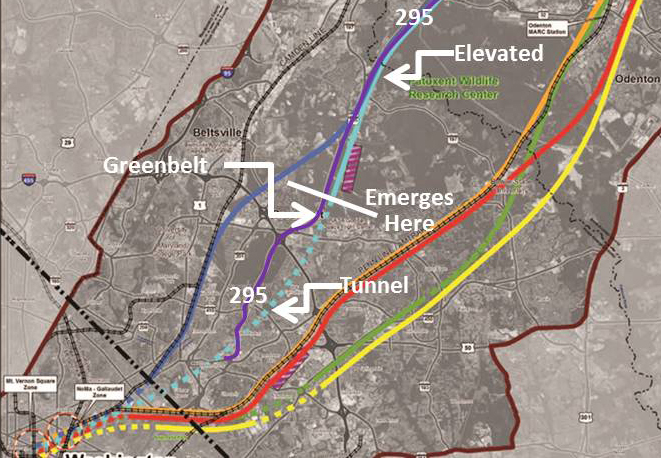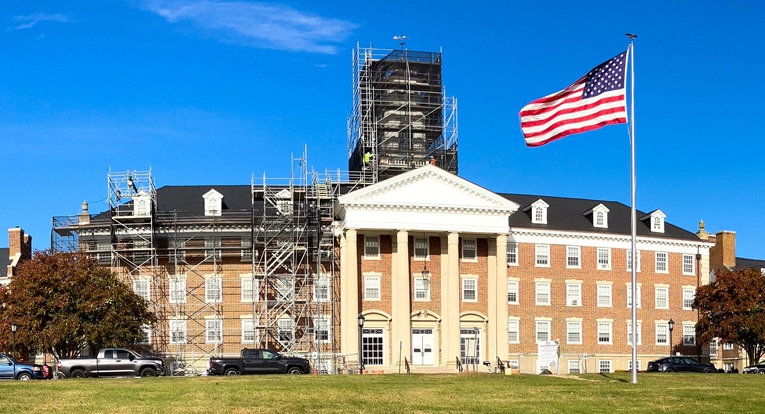This is the first of a series of articles about the efforts to construct a high-speed train system through Greenbelt. Is maglev the transportation mode of the future? Will it succeed as well as did railroad trains, horseless carriages and airplanes? Or will it go the way of the Stanley Steamer, the dirigible and the SST? Time will tell.
Powerful forces, including the U.S. Congress, the Maryland governor and prominent political and business leaders are behind a proposal to explore providing an electromagnetic driven high-speed train (SCMaglev) service between Washington and Baltimore with one stop at the Thurgood Marshall Baltimore-Washington International Airport. This could be the first phase of a line that runs all the way north to Boston and maybe south to Charlotte. The train is expected to be able to carry travelers between Baltimore and Washington in 15 minutes, going much of the way underground in tunnels and the rest on elevated structures. The route selected could run in bored tunnels 90 feet under existing homes and other property in Greenbelt, including the Forest Preserve where it might emerge from the tunnel and become elevated.
But whether you are for or against this proposal, you shouldn’t expect to see the train system built and running for quite some time, optimistically seven years for the WashingtonBaltimore section and many more for the entire length, that is if it is ever built.
Maglev stands for magnetic levitation. SC stands for super conducting, one form of maglev. To explain how this works on a train is beyond this reporter’s ability. In simple terms, an electric powered engine develops a super-strong magnetic force that lifts the train off the ground and pulls it forward at a high rate of speed. A guideway steers the train’s direction, although the train does not touch it or the ground until it stops. To the power of the magnetic force is added the reduction of drag because the train is essentially flying at speeds well over 300 miles an hour. Proponents say it will be noiseless and vibrationless and because it runs on electricity, it can be powered from renewable sources, not fossil fuels. Others strongly disagree and claim that it will make noise and vibrate and cite as one supporting document, a High-Speed Ground Transportation Noise and Vibration Impact Assessment prepared for the Federal Railway Administration in September 2012 by the consulting firm Harris, Miller, Miller & Hanson, Inc More on this story in the paper – click here




